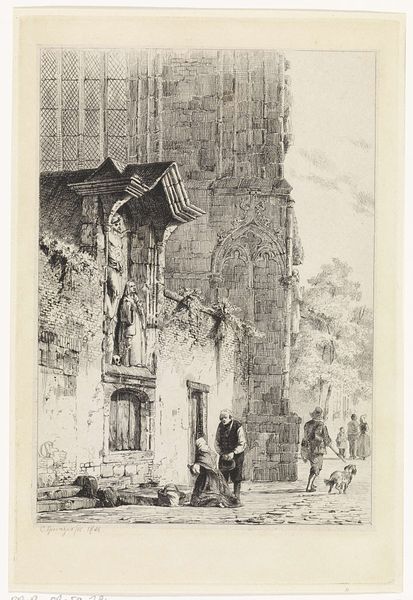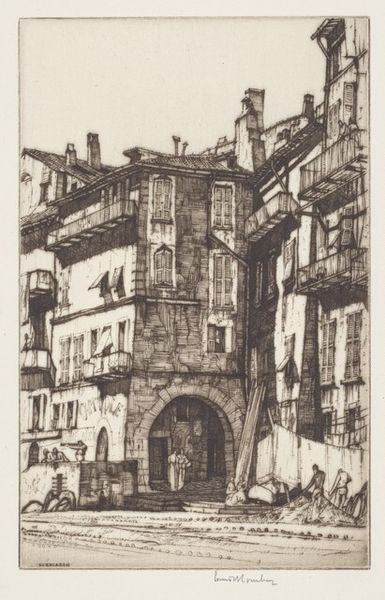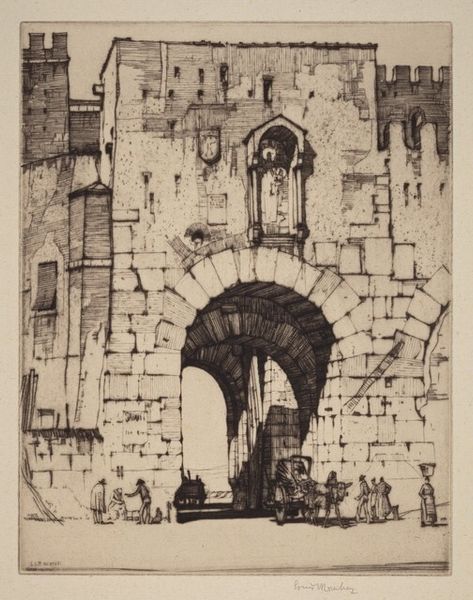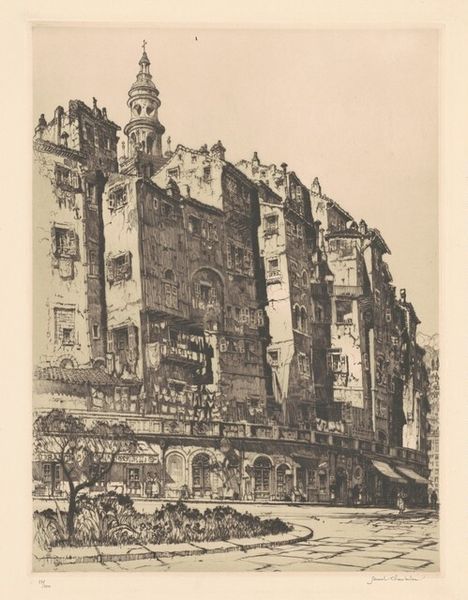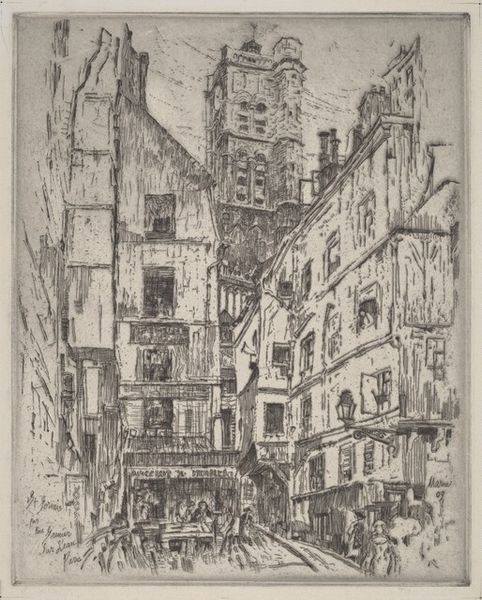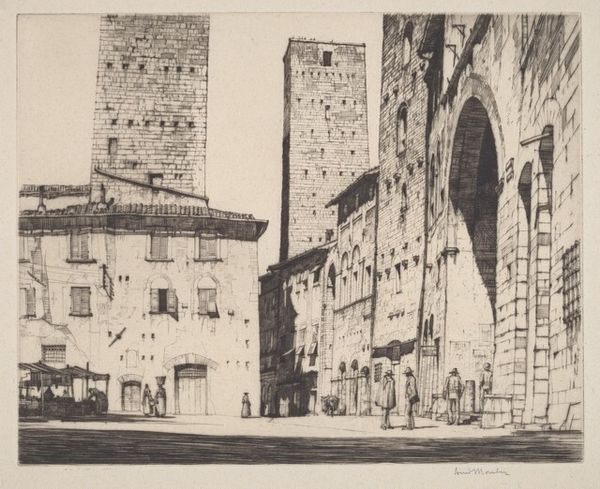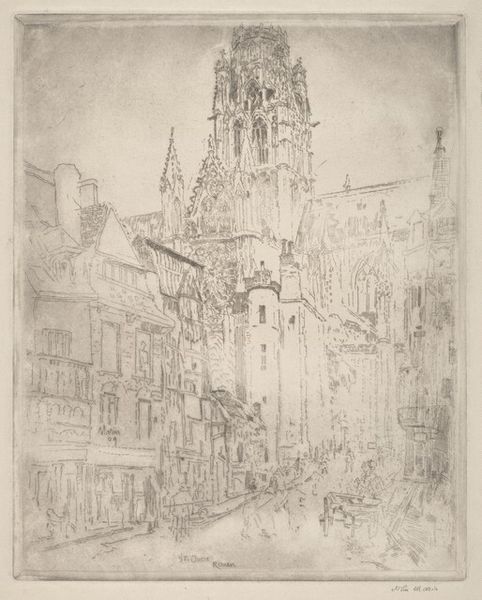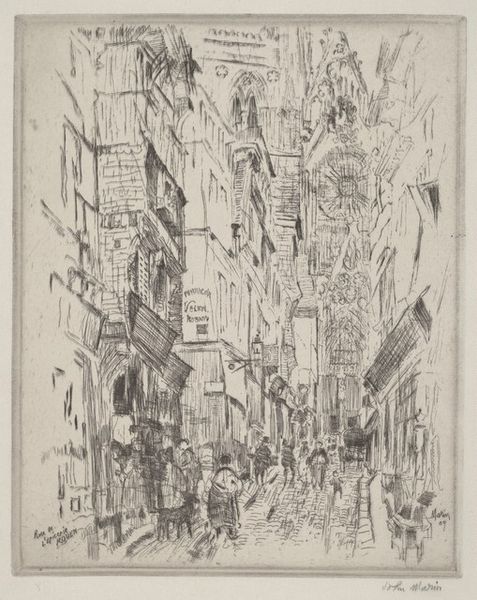
print, etching
#
art-deco
# print
#
etching
#
landscape
#
etching
#
cityscape
#
realism
Copyright: National Gallery of Art: CC0 1.0
Curator: This etching, "Quai de la Marine, Villefranche," was created by Louis Conrad Rosenberg in 1928. He's captured this beautiful seaside town on the French Riviera using delicate lines and tonal contrasts. It's a masterful display of realism with hints of art deco elegance. Editor: Right away, I get this almost dreamlike quality. The way the buildings seem to grow out of the cliffside – it feels precarious, like a romantic ruin teetering between past grandeur and inevitable decay, wouldn't you say? Curator: Precisely. Villefranche has always been a strategic port. You can imagine how the military architecture layered itself onto earlier structures. The etching highlights the weight of history in the landscape – those imposing buildings, that elevated perspective... It all speaks to power and resilience. Editor: It's those contrasts in the details that grab me. See the shadows dancing under the arches, then the almost austere façade above, but suddenly, there's that lovely human element of people by the docks, drawing water from the well. Rosenberg grounds the epic with the everyday. Curator: The figures, especially those seemingly just going about their routines, reinforce that continuity, yes. And Rosenberg uses his aquatint to full effect; see the textures, how he manages to suggest sun-drenched stone alongside cool shadows. A visual poem really. It reflects both the real and the felt experience of this specific time and location. Editor: Absolutely, and it hints at the changing roles of such a portside area between the wars. Was it purely strategic still, or was Rosenberg documenting an area changing through tourism? This slice of life invites such speculation and reminds me how art reflects culture. Curator: I agree, and as a printmaker Rosenberg was no doubt concerned with making this location accessible through reproducibility, as well as celebrating its form. The print became its own form of social and visual currency. Editor: To think of this place, almost suspended between the natural and constructed, recorded using this accessible process! What a testament to both its physical being, but its shifting place in society, captured here by Rosenberg’s remarkable eye.
Comments
No comments
Be the first to comment and join the conversation on the ultimate creative platform.
